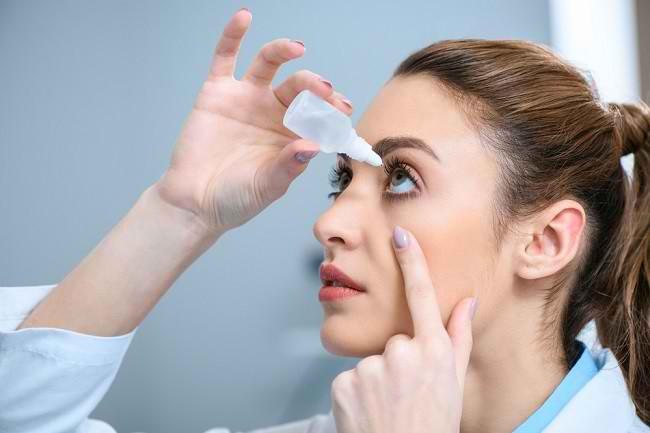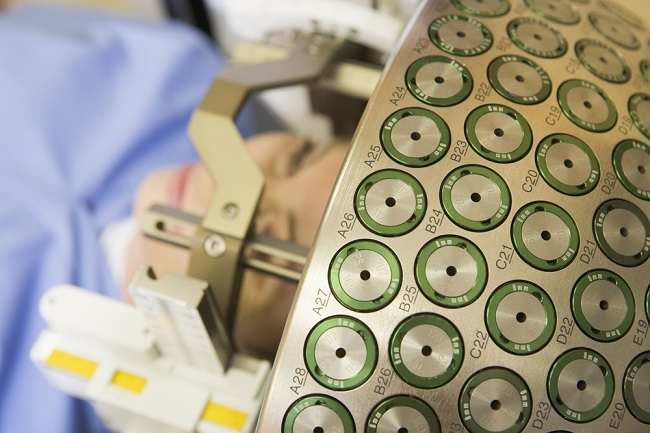Rett syndrome is abnormality genetics that affect brain development. This condition, which is more often experienced by girls, will show symptoms at the age of 1 to 1.5 years.
Babies with Rett syndrome initially develop normally, then development is delayed. This barrier occurs gradually, ranging from speech delays to movement disorders.

Rett syndrome is a rare condition. Based on research, this condition occurs in every 1 in 15,000 births.
Symptoms of Rett Syndrome
Symptoms of Rett syndrome vary, both from the patient's age when symptoms first appear, and the severity of symptoms.
Most babies with Rett syndrome grow normally until 6 months of age. After that, symptoms began to appear. However, significant changes tend to appear only at the age of 1 to 1.5 years.
Rett syndrome disease course is divided into 4 stages, namely:
Stage 1(stagnation)
Stage 1 is characterized by symptoms of difficulty eating, abnormal and repetitive leg movements, speech delays, difficulty moving (eg when wanting to sit, crawl, or walk), and lack of interest in playing. Stage 1 symptoms appear when the child is 6-18 months old.
Stage 2(regression)
At this stage, the child's abilities can decrease drastically or slowly. Symptoms include repetitive and uncontrolled hand movements (such as squeezing or patting), fussing and screaming for no apparent reason, avoiding contact with other people, being unbalanced when walking, sleep disturbances, sluggish head development, and difficulty chewing and swallowing. Stage 2 appears in the age range of 1-4 years.
Stage 3 (plateau)
This stage is marked by an improvement in the symptoms experienced in stage 2. For example, the child becomes less fussy and pays more attention to others. The way the child walks and communicates also begins to improve.
However, there are some new symptoms that appear at this stage, such as seizures, irregular breathing patterns (such as breathing short, then taking a deep breath, or holding your breath), and the habit of grinding your teeth. Some children even have heart rhythm disturbances. This stage begins at the age of 2-10 years.
Stage 4(dinterioration in moven)
Stage 4 is characterized by spinal deformity or scoliosis, muscle weakness and stiffness, and inability to walk. On the other hand, the child's ability to communicate and brain function did not deteriorate, even the repetitive hand movements and seizures began to decrease. Stage 4 symptoms last into adulthood.
When to go to the doctor
Some diseases can be prevented by getting vaccines. The Indonesian Pediatrician Association issues immunization schedules for infants and children. Visit the pediatrician according to the vaccine schedule that has been set. During the visit, the doctor will monitor the child's growth and development.
Immediately consult a doctor if you feel there is something different with your child, such as:
- Fussy
- Talking late
- Don't like to play
- Minimal response when interacting with people
- Repetitive hand movements
- Head looks small
Causes of Rett Syndrome
Rett syndrome is caused by mutations or changes in the gene that regulates brain development, namely MECP2. It is not known what causes these gene changes.
Rett syndrome is not a disease that is passed down from parents. Even so, children from families with a history of Rett syndrome are thought to be more at risk of suffering from the same condition.
Rett syndrome is more common in girls than boys. However, if Rett's syndrome is experienced by boys, the disorders that occur can be more severe, even the child usually has died in the womb.
Diagnosis of Rett Syndrome
Doctors can detect Rett syndrome if there is a developmental disorder in children with characteristics or symptoms that point to this disease. To be sure, the doctor will run a genetic test by taking a blood sample to be studied in the laboratory.
Rett Syndrome Treatment
Treatment for Rett syndrome aims to manage symptoms and help people with activities of daily living. These treatments include:
- Speech and language therapy, to improve the patient's communication skills.
- Drugs, to relieve symptoms of muscle stiffness, respiratory problems, and seizures.
- Adequate nutritional intake, to help the patient's physical and mental development.
- Physiotherapy, to help sufferers move better. In patients with Rett syndrome with spinal deformities, doctors will provide aids.
- Occupational therapy, to help sufferers do their own daily work, such as wearing clothes or eating.
Although there is no specific treatment that can treat Rett syndrome, some sufferers can control their movements and communicate better after undergoing the above treatments. However, most people with Rett syndrome still need help in performing daily activities for the rest of their lives.
Complications of Rett Syndrome
Most people with Rett Syndrome can still reach adulthood. Complications that can arise from Rett Syndrome include:
- Sleep disturbance
- Eating disorders
- Bone and joint problems
- Behavioral and anxiety disorders
- Digestive disorders, such as constipation and heartburn
In addition to the above complications, some people with Rett syndrome can experience pneumonia or heart rhythm disturbances which can be fatal.









